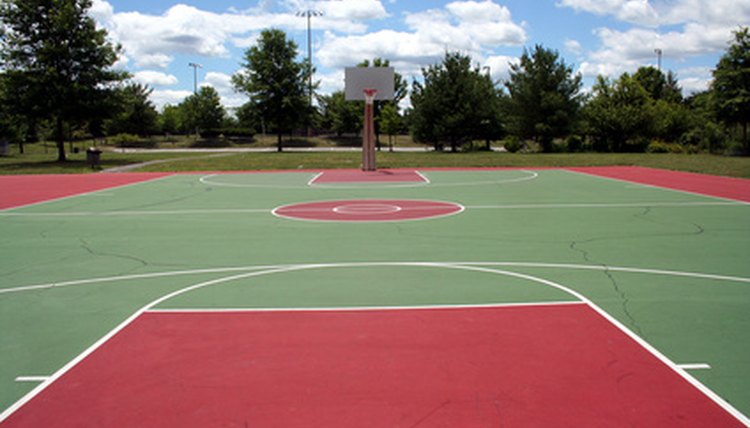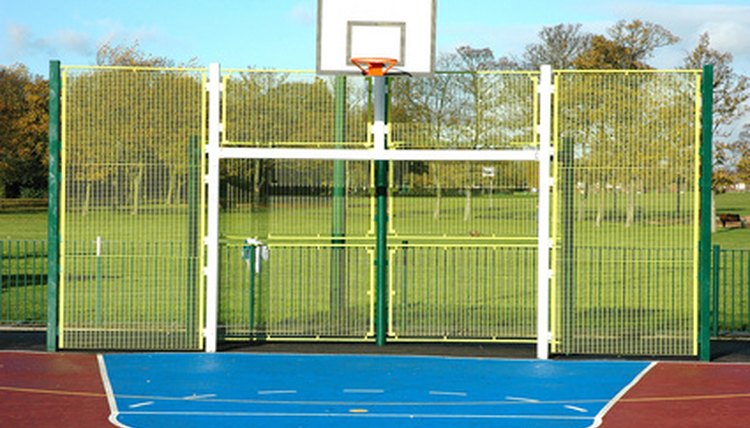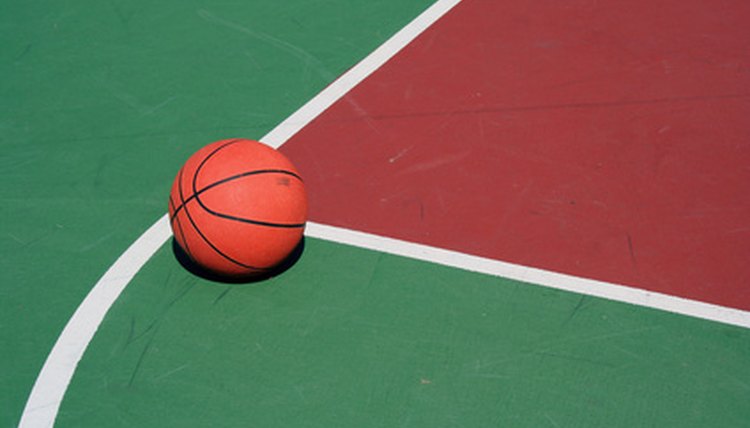Lane Violations in Basketball Rules

There are a number of different types of lane violations in basketball depending on the league, level and gender of the participants involved. Lane violations can occur on offense or defense and usually result in a stoppage of play to reward the nonoffending team possession of the ball or other benefit. The standard violations stem from the NBA and NCAA rules, which coincide in nearly all lane violation cases.
What Is the Lane?

Basketball Court image by Jim Mills from <a href='http://www.fotolia.com'>Fotolia.com</a>
The lane (sometimes called the key or the paint) of a basketball court is the rectangular area directly in front of either basket and can range in size from 19 feet by 12 feet for college to 19 feet by 16 feet for the NBA.
Offensive 3 Seconds
In all levels of play, players who are on offense are not allowed to stand with any part of their feet in the lane area for more than 3 seconds (as determined by the referee) without a player attempting a shot. Failure to abide by this rule results in loss of possession for the offense.
Free Throw Shooter Lane Violation

Basketball Court image by Jim Mills from <a href='http://www.fotolia.com'>Fotolia.com</a>
When an offensive player is shooting free throws, he must shoot within the half circle formed at the end of the lane (the free throw line) opposite the basket. If the shooter leaves that area before the ball hits the rim, it is a violation and the shot is forfeited. If it happens on the second shot, the shot is forfeited and possession is awarded to the other team.
Free Throw Shot Line Up Lane Violations (Nonshooter)
When a free throw is being shot, nonshooting players line up on the sides of the lane in the areas marked by dashes. The defending team must have the spots closest to the basket and spots must alternate teams. Failure to do so results in an additional free throw if a free throw is missed or the forfeiture of a free throw if on the offensive team. The team on offense may choose to remove its players for strategic reasons without penalty, but those spots must remain open. During any foul shot, three players from the defensive team must line up and up to two offensive players (not including the shooter) can line up along the key. All remaining players stand behind the three-point line.
Foul Shot Lane Violation
Players (including the shooter) must wait until the ball leaves the shooter's hands before they can attempt to grab the rebound. Failure to wait by the defense is a lane violation resulting in another free throw attempt if a free throw is missed (no penalty if it is made), and failure to wait by the offense is a lane violation resulting in the forfeiture of the current shot. If both teams have a lane violation, it results in a jump ball between any two players--one from each team.
Defensive 3 Seconds (NBA Only)
In the NBA, a defensive player is not allowed to stand in the lane for more than 3 seconds unless he is directly guarding his own defensive assignment and is within close range of that player. Players may not double-team a player without the ball in the lane for more than 3 seconds. Failure to heed these rules results in a warning for the first violation and a team technical foul on each additional violation, which awards the offense a free foul shot and possession of the ball.
References
